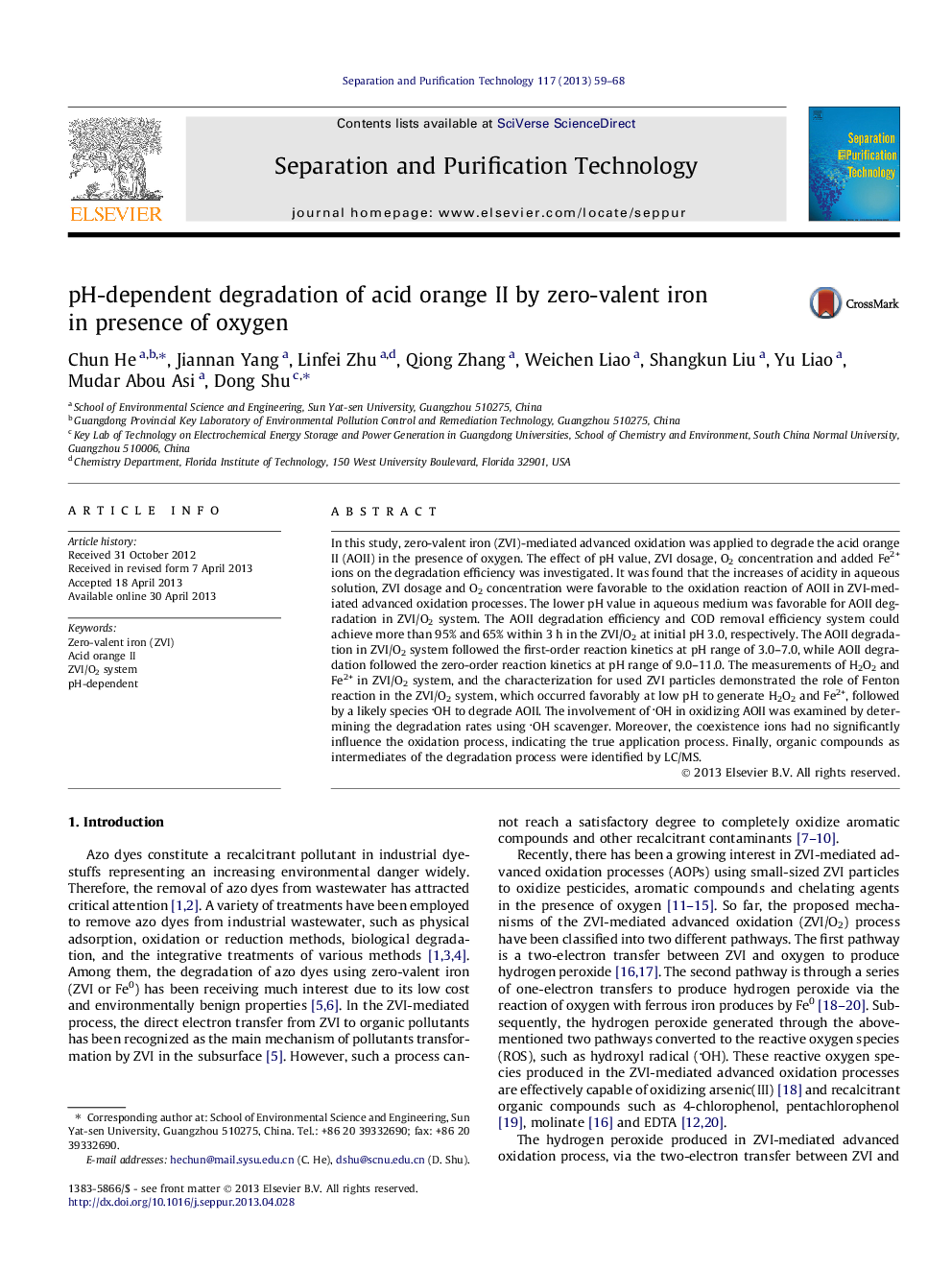| Article ID | Journal | Published Year | Pages | File Type |
|---|---|---|---|---|
| 7044471 | Separation and Purification Technology | 2013 | 10 Pages |
Abstract
In this study, zero-valent iron (ZVI)-mediated advanced oxidation was applied to degrade the acid orange II (AOII) in the presence of oxygen. The effect of pH value, ZVI dosage, O2 concentration and added Fe2+ ions on the degradation efficiency was investigated. It was found that the increases of acidity in aqueous solution, ZVI dosage and O2 concentration were favorable to the oxidation reaction of AOII in ZVI-mediated advanced oxidation processes. The lower pH value in aqueous medium was favorable for AOII degradation in ZVI/O2 system. The AOII degradation efficiency and COD removal efficiency system could achieve more than 95% and 65% within 3Â h in the ZVI/O2 at initial pH 3.0, respectively. The AOII degradation in ZVI/O2 system followed the first-order reaction kinetics at pH range of 3.0-7.0, while AOII degradation followed the zero-order reaction kinetics at pH range of 9.0-11.0. The measurements of H2O2 and Fe2+ in ZVI/O2 system, and the characterization for used ZVI particles demonstrated the role of Fenton reaction in the ZVI/O2 system, which occurred favorably at low pH to generate H2O2 and Fe2+, followed by a likely species OH to degrade AOII. The involvement of OH in oxidizing AOII was examined by determining the degradation rates using OH scavenger. Moreover, the coexistence ions had no significantly influence the oxidation process, indicating the true application process. Finally, organic compounds as intermediates of the degradation process were identified by LC/MS.
Related Topics
Physical Sciences and Engineering
Chemical Engineering
Filtration and Separation
Authors
Chun He, Jiannan Yang, Linfei Zhu, Qiong Zhang, Weichen Liao, Shangkun Liu, Yu Liao, Mudar Abou Asi, Dong Shu,
